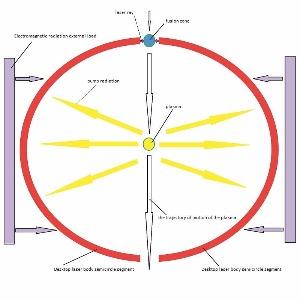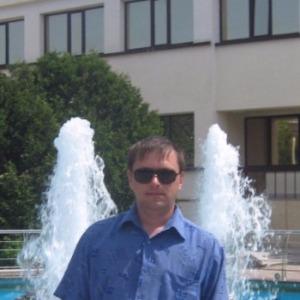
Spherical laser pumped by thermonuclear fusion. by Kovalevich
 Michal Monit Sep 3, 2017 05:51 | Dear Kovalevich, |
 Maksim Kovalevich Sep 4, 2017 08:32 | Proposal contributor With the realization of this idea, thermonuclear fusion will be obtained in this Description of the refractive property https://en.wikipedia.org/wiki/Total_internal_reflection Total internal reflection is the phenomenon which occurs when a propagated wave strikes a medium boundary at an angle larger than a particular critical angle with respect to the normal to the surface. If the refractive index is lower on the other side of the boundary and the incident angle is greater than the critical angle, the wave cannot pass through and is entirely reflected. The critical angle is the angle of incidence above which the total internal reflection occurs. This is particularly common as an optical phenomenon, where light waves are involved, but it occurs with many types of waves, such as electromagnetic waves in general or sound waves. When a wave reaches a boundary between different materials with different refractive indices, the wave will in general be partially refracted at the boundary surface, and partially reflected. However, if the angle of incidence is greater (i.e. the direction of propagation is closer to being parallel to the boundary) than the critical angle – the angle of incidence at which light is refracted such that it travels along the boundary – then the wave will not cross the boundary, but will instead be totally reflected back internally. This can only occur when the wave in a medium with a higher refractive index (n1) reaches a boundary with a medium of lower refractive index (n2). For example, it will occur with light reaching air from glass, but not when reaching glass from air. Fiber laser https://en.wikipedia.org/wiki/Fiber_laser
|
 Betsy Agar Sep 9, 2017 10:27 | Maksim, you have clearly thought a great deal about this! If I understand correctly, you are proposing we take advantage of the perfect circle for maximum reflection and the best way to do that is not by mirrors but by fibre optics because mirrors allow x-rays to pass through them, so leak some of the energy, correct? It would be helpful if you could describe the differences your new system makes and explicitly list the specific improvements these changes make.
|
 Maksim Kovalevich Sep 10, 2017 01:56 | Proposal contributor You correctly understood this concept. This is a new type of laser that works by applying part of the energy of thermonuclear fusion in the X-ray emission spectrum.Thank you, Betsy. |
 Maksim Kovalevich Sep 10, 2017 02:12 | Proposal contributor An ideal circle in this new type of optical fiber laser is not needed, this fiber mirror works in X-ray radiation without violating the laws of physics. In this concept, the laws of physics of total internal reflection work for absolutely all kinds of electromagnetic energy.
|